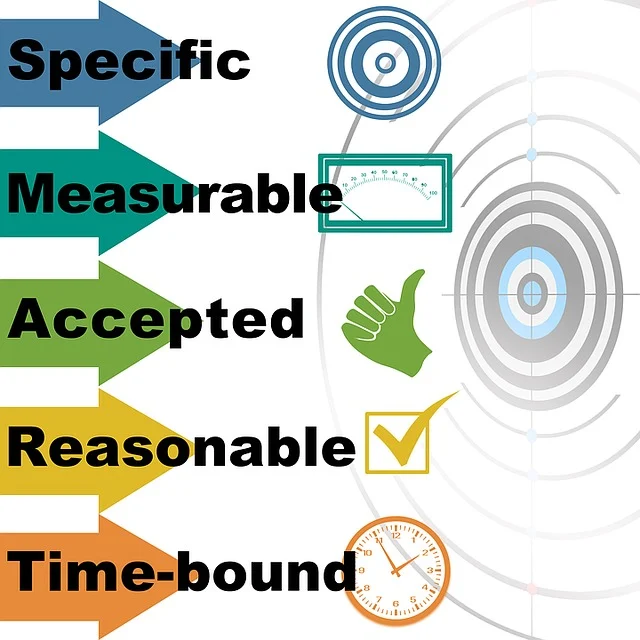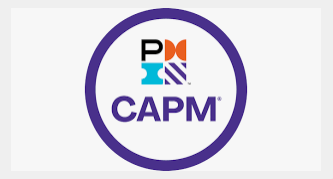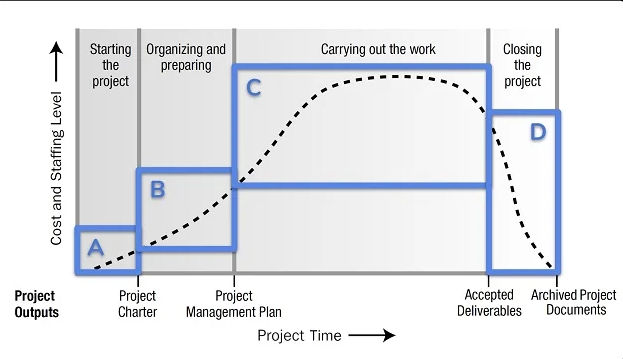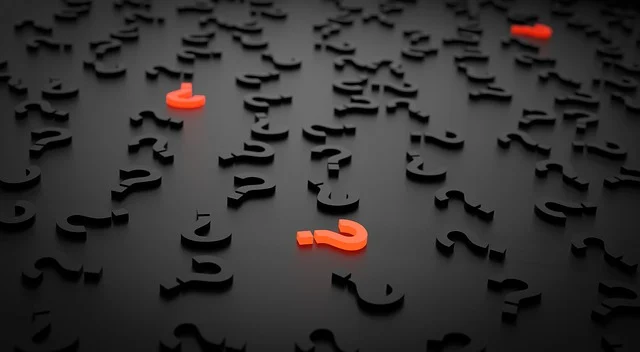Akinwole Adebayo Najeemdeen (B. Ed, M. Ed).
Abstract
Teachers have to solve important issues related to the adaptation of the learning process towards
students who have different learning styles and new requirements for teaching and learning.
Gamification is one of the educational approaches and techniques that increase motivation and
engagement of learners.
The aim of this paper is to study and present the nature and benefits of gamification and to critically examine MECAMA Educational Games as tools for educational growth and development; and also to provide some ideas on how to implement the games in an educational setting.
Key Words: gamification, skill-practice games, role playing, simulations, educational game, MARCO,
E’MARCO, COGA, ANTOR, MARCO PLUS, MECAMA
INTRODUCTION
Generally, a game is an activity or a sport with rules in which people (players) or teams compete against each other or one another. In other words, a game is any contest (setting) among players interacting within a set of limitations (rules) to achieve an objective.
Games and simulations can be viewed as a component of an overall educational strategy, used to supplement other teaching methods, and developed as the major device for presentation, and used as a practical laboratory for the application of ideas learned elsewhere.
Games are integral parts of all cultures and one among the oldest sorts of human social interaction. A game is any sort of play, amusement and activity involving competition. Game contains what can engage students and help them enter a state of flow where they are fully immersed within the learning environment and energized to specialise in the activity they are involved in (Koivisto & Hamari, 2014).
The three types of games are Skill-practice games, Role Playing and Simulations. Educational games are games that are designed to help people to learn about certain subjects, expand concepts, reinforce development, understand a historical event or culture or assist them in learning a skill as they play.
In recent years, educational games have become more and more prevalent. There is an abundance of specifically designed educational games. There are also many entertainment games that have been used for training or education. Educational games are specifically used for education. Educational games are also known as academic games, serious games, skill-practice games and game-based learning.
Game-based learning (GBL) is a type of game play that has defined learning outcomes. Generally,
game-based learning is designed to balance subject matter with game play and the ability of the player to retain, and apply said subject matter to the real world.
Play and learning are synonymous, leading to cognitive and emotional development inside a social and cultural context. (Wikipedia).
The idea of using games or games elements in education to interact students within the process of active learning is not new and may be traced back to the sixties when Piaget (1962) acknowledged that games could not only help children to master their environments but also to make the worlds of their imagination.
Games also encourage students to play a lively role within the learning process thus
supporting active learning, experiential learning, playful learning, and problem-based learning (Oblinger, 2004). Over the years, educators are increasingly incorporating various games into their teaching curriculum in an attempt to make a fun and interesting learning environment for college kids.
Educational games are interactive, collaborative and competitive games that tend to motivate and encourage student
participation within the learning process (Martí Parreñoa, et al., 2016).
MEANING OF GAMIFICATION AND GAMIFICATION IN EDUCATION
Teachers are facing new challenges and have to solve important issues related to the adaptation of the
learning process towards students’ needs, preferences and requirements. Teachers have to use different
teaching methods and approaches that allow students to be active participants with strong motivation and
engagement to their own learning.
According to Kapp (2012), gamification is “using game-based mechanics, aesthetics and game
thinking to engage people, motivate action, promote learning, and solve problems.” The term
‘gamification’ refers to the use of game mechanics in non‐gaming contexts (Deterding, Dixon, Khaled, &
Nacke, 2011) or, rather, to the event of creating gameful experiences (Koivisto & Hamari, 2014).
Gamification is the use of game thinking, approaches and elements in a context different from the
games.
Using game mechanics improves motivation and learning in formal and informal conditions. In
summary, Gamification is an integration of game elements and game thinking in activities that are not
games. Gamification in education is, therefore, the use of game mechanics and elements in educational environment.
Implementation of game elements in education is logical since there are some facts that are
typical for the games and training. Users’ actions in games are aimed at achieving a specific goal (win) in the presence of obstacles. In education, there is a learning objective, which has to be achieved by performing specific learning activities or interaction with educational content.
Tracking the players’ progress in games is an important element, because next steps and moves are based on their results. In education tracking the students’ progress is essential to achieve the learning objectives. Students’ learning path is determined by the achieved levels of knowledge and skills (Glover, 2013).
Collaboration in education is a milestone for the effective implementation of active learning.
Unlike training, games possess a strong competitive element. The focus in learning process should be
rather towards developing skills for collaboration and teamwork and responsibility for the performance of the group instead of competition between students.
IMPORTANCE AND EFFCETS OF GAMIFICATION IN EDUCATION
Gamification seems to be a replacement trend in several sectors, alongside business, structure
management, in-service coaching, health, policy, and education.
Gamification is adopted in different contexts and for a variety of purposes. It is used as a driver to promote fundamental things like learning, employee performance, customer engagement, and even crowdsourcing initiatives.
Gamification represents an innovative and interesting methodology to motivate students and
enhance their learning process (Martí-Parreñoa, Seguí-Masa, & Seguí-Mas, 2016). Gamification affects students’ behavior, commitment and motivation, which can lead to improvement of knowledge and skills (W. Hsin-Yuan Huang, D. Soman, 2013). Gamification supports and motivates students, and can thus lead to enhanced learning processes and outcomes (Kapp, 2012).
Lam (2014) asserted that the utilization of gamification could turn learning into a more interesting
and interesting activity and assist in improving students’ level of attention and persistence also as their
attitudes towards learning.
Gamification is an effective approach to make positive change in students’ behavior and attitude
towards learning, to improve their motivation and engagement. The results of the change have bilateral nature – they can affect students’ results and understanding of the educational content and create conditions for an effective learning process.
MECAMA EDUCATIONAL GAMES
MECAMA Educational Games are a brand of five educational games invented to aid learning processes. They are all board and card games with clearly written and easy-to-understand rules and manuals. When talking about board games in the context of learning and education, it can be said that a board game is more than just a game of strategy played by moving pieces on a board.
The term “board game” surely implies action (a specific kind of activity), but it also encompasses the experience of play – the unique modality of human experience (Botturi & Loh, 2008). It is a carefully constructed system designed to create a gameplay experience (Hunsucker, 2016), as well as to make certain content, problems or materials more clear, more personal and closer to the players; it is a sort of autotelic experience in which a person is completely involved engaging his or her full operational capacities (Csikszentmihalyi, 1999).
MECAMA Educational games, which are technologically adoptable, are a kind of instructional
and learning materials designed in a playable way and attractively with a view to bringing about the
advantages inherent in games.
The games are MARCO, E’MARCO, COGA, ANTOR and MARCO PLUS. MECAMA Educational Games are patented by the Trademark, Patent and Design Division, Commercial Law Department, Federal Ministry of Industry, Trade and Investment in Nigeria.
MECAMA Educational Games are indigenous academic games with international standards and endorsements by local and international academics and organisations. The TVC News endorsed MECAMA Educational Games’ invention by featuring their reports in her national special news.
In each pack of MECAMA Educational Games, there are game board, scorecard, game cards,
pencils, game manuals/playing rules and video for the games’ knowhow. Efforts to put MECAMA
Educational Games (MARCO, E’MARCO, COGA, ANTOR and MARCO PLUS) in electronic forms in
terms of phone applications and computer software are on, for global and easy acceptability and
accessibility.
#1 MARCO EDUCATIONAL GAME
MARCO is a number game for 2 players or teams or groups only. MARCO GAME is designed to
achieve some mathematical objectives which would help in the teaching and learning of other
mathematical concepts. The objectives are:
i. Inequalities concept
ii. Balance method of solving equations
iii. Quantitative reasoning skills
iv. Prime numbers concept
v. Factors, common factors and HCF concepts
vi. Multiples, common multiples and LCM concepts
vii. Basic arithmetic operations concept etc.
MARCO Educational Game’s playing time is between 25 minutes and 30 minutes.
#2 E’MARCO EDUCATIONAL GAME
E’MARCO is a word game for 2 players or teams or groups only also. E’MARCO game is designed to
achieve some English language studies basic objectives which are prerequisite for other concepts in the
subject. The objectives are:
i. Vocabulary development
ii. Word building and formation concepts
iii. Spelling mastery
iv. Verbal reasoning skills
v. Palindromes concept
vi. Anagrams concept etc.
E’MARCO Educational Game’s playing time is between 35 and 40 minutes.
#3 COGA EDUCATIONAL GAME
COGA is a blend of codes and game. Two, three and four people or teams or groups can play the game of COGA. COGA game is designed to achieve some English language studies basic objectives which are
prerequisite for other concepts in the subject. The objectives of the game are:
i. Vocabulary development
ii. Word building and formation concepts
iii. Spelling mastery
iv. Verbal reasoning skills
v. Palindromes concept
vi. Anagrams concept etc.
COGA Educational Game’s playing time is between 50 minutes and 1 hour.
#4 ANTOR EDUCATIONAL GAME
ANTOR is a word game for 2 players or teams or groups only. ANTOR game is designed to achieve the
following English language basic objectives:
i. Word building and formation concepts
ii. Vowels concept and knowledge
iii. Consonants concept and knowledge
iv. Spelling mastery
v. Verbal reasoning skills
vi. Palindromes concept
vii. Anagrams concept
ANTOR Educational Game’s playing time is between 35 and 40 minutes.
#5 MARCO PLUS EDUCATIONAL GAME
MARCO PLUS is a number and letter game for 2 players or teams or groups only. MARCO PLUS is
designed to achieve the following mathematical objectives:
i. Inequalities concept
ii. Balance method of solving equations
iii. Quantitative reasoning skills
iv. Addition and subtraction of numbers concepts
MARCO PLUS Educational Game’s playing time is between 25 minutes and 30 minutes.
MECAMA EDUCATIONAL GAMES AS GAMIFICATION TOOLS
MECAMA Educational Games are not only skill-practice games but also powerful tools which have
many possible English Language and Mathematics applications. MECAMA Games also provide
powerful means for motivating learners, for entertaining them and drawing out the quiet or unsure
learners.
1. MECAMA Educational Games are fun to play.
2. They create active participatory learning.
3. They provide immediate feedback.
4. They promote applications to read settings and roles.
5. They are flexible.
Games are one of the most important components in classroom settings. They usually provide great
pedagogical value for teachers and learners when they are introduced in classrooms. MECAMA
Educational Games have a myriad of advantages for the young learners. Some of them include:
1. MECAMA Educational Games have clear rules and objectives;
2. They develop critical thinking, problem solving and imagination;
3. They offer new and dynamic forms of teaching and practicing which replace the traditional
worksheets;
4. They are adaptable for different levels of knowledge;
5. They are easy to understand and use;
6. Their results are more visible and have a stronger impact;
7. They provide immediate feedback for both the teachers and students;
8. They facilitate collaborative learning;
9. They are used in the classroom as rewards for students;
10. They play crucial roles in teaching and learning contexts in a variety of areas.
WHY MECAMA EDUCATIONAL GAMES?
MECAMA Educational Games are designed to achieve the following objectives:
1. To change English Studies and Mathematics curriculums to games;
2. To spur, increase and sustain interest in mathematical calculations and improve English Language
understanding, writing and use;
3. To cater for cognitive, psychomotor and affective domains of learning of players;
4. To present Mathematics and English in rather fun ways;
5. To make learning simple, interactive, fun and affordable;
6. To entertain players and onlookers as they marry fun with learning;
7. To build the confidence of players in the face of real-life academic and social situations.
HOW TO USE MECAMA EDUCATIONAL GAMES EFFECTIVELY
MECAMA Educational Games are relatively easy to use and require only limited amounts of preparation.They must be integrated into an overall set of learning objectives. They can be easily be made
entertaining and should be used to motivate learners/players and make class attendances fun rather than
drudgery.
To be most effective, MECAMA Educational games must:
1. Be integrated in the school curriculum/time table – This is unique and pacesetting for any
educational setting;
2. Be blended into mathematics and English Studies teaching;
3. Include reward/award system for players;
4. Have competitions among;
5. Be used as co-curricular activities;
6. Be relevant – New skills and words and meanings are to be asked from players, and lots more.
CONCLUSION
Notably, not much research has been done on how games are actually used in teaching and learning
scenario but the few ones that have been done have actually proved effective, efficient, positive, fruitful and in line with the current educational trends. Gamification is an effective approach to make positive change in students’ behavior and attitude towards learning, to improve their motivation and engagement.
The results of the change have bilateral nature – they can affect students’ results and understanding of the educational content and create conditions for an effective learning process.
It is undoubtedly noteworthy playing games lead to the creation of something new, tangible and
certainly noticeable. A playful approach to education gives freedom to all actors in the processes of
teaching and learning.
Freedom is particularly noticeable in the context of understanding, encouraging
and creating new learning and teaching potentials through a collective, collaborative and creative work
based on the application of board games.
If this freedom is to be productive in terms of development,
both students and teachers need to learn about games and play, so these could be appropriately used for learning purposes. Thus, learning about games and play is a precondition of learning through games and play.
REFERENCES
David R. Evans (1979). Games and Simulations in Literacy Training. Hulton Educational Publications,
Tehran
Gamifying Education.org. (n.d.). Retrieved from Gamifying Education.org: http://www.gamifying
education.org/
Giang, V. (2013, September 18). “Gamification” Techniques Increase Your Employees’ Ability To Learn
By 40%.
Glover, I. (2013). Play as you learn: gamification as a technique for motivating learners. World
Conference on Educational Multimedia, Hypermedia and Telecommunications. AACE.
Kapp, K. M. (2012). The Gamification of learning and instruction: game-based methods and strategies
for training and education. John Wiley & Sons.
Piaget, J. (1962). The stages of the intellectual development of the child. Bulletin of the Menninger
Clinic, 26(3), 120-128.
Prensky, M. (2009). H. sapiens digital: From digital immigrants and digital natives to digital wisdom.
Innovate: journal of online education, 5(3).
Rodilla, R. (2012). Playful Learning in the EFL Class: The Beneficial Use of Board Games and the
LEGO Serious Play Method, Action Research Project, Master in Teaching English as a Foreign
Language. Alcala de Hanares: Universidad de Alcala.
Do you enjoy this article, add Our Posts to your Reading List.
Action Point
PS: I know you might agree with some of the points that I have raised in this article. You might not agree with some of the issues raised. Let me know your views about the topic discussed. We will appreciate it if you could drop your comment. Thanks in anticipation.
Fact Check Policy
CRMNuggets is committed to fact-checking in a fair, transparent and non-partisan manner. Therefore, if you’ve found an error in any of our reports, be it factual, editorial, or an outdated post, please contact us to tell us about it.
Follow Us on Twitter. Click Here.
Many Crypto. One place. Use Roqqu
Hi, I now use RavenBank to send, receive and save money. I also pay my bills with ease, you should try it out too
OUR MISSION
To create well-reached contents that will increase the intellectual prowess of our readers.
OUR VISION
To become a reference point in the blogging space by the year 2030. We want to be among the first 30 blogs in Nigeria.
Official Social Media Pages for crmnuggets.com
Join Our Telegram Channel: CRMNUGGETS
Twitter: @cehnigeria
Facebook: @CRMNuggets
Instagram: @crmnigeriablog
Pinterest: CEHNIGERIA
Threads @crmnuggets
|
|
![]()












